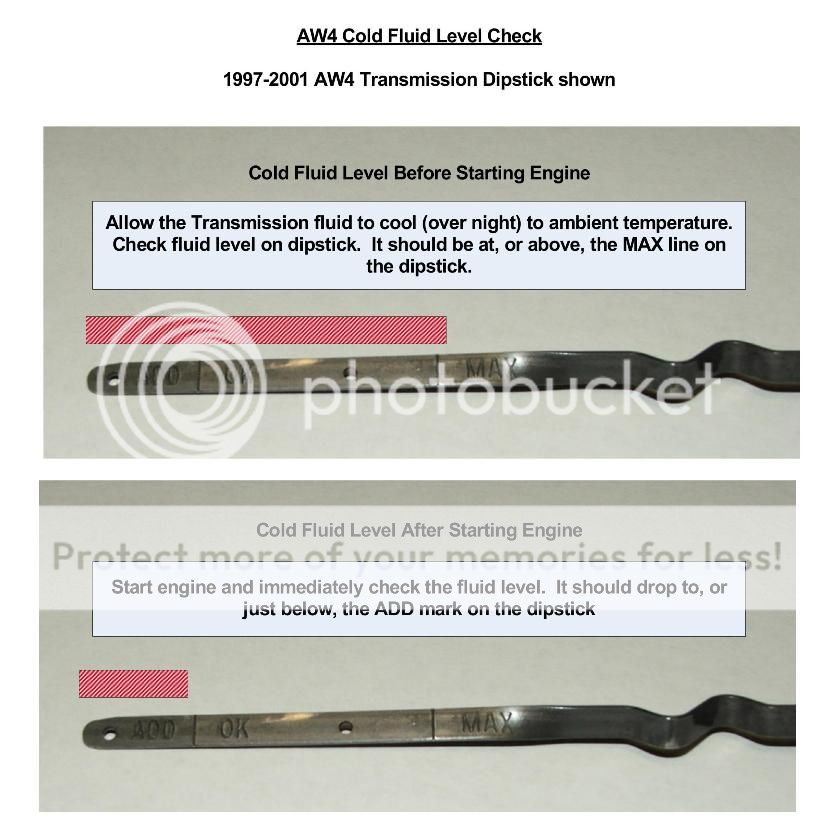Sidewinder CC
NAXJA Forum User
- Location
- Canton, Michigan
If your flex plate bolts are tight and there are no cracks in the flex plate try this test.
If the fluid level does not drop, as specified, there's a chance the torque converter is bad or the transmission oil pump is bad. Not a conclusive test but has shown bad torque converters in the past.

If the fluid level does not drop, as specified, there's a chance the torque converter is bad or the transmission oil pump is bad. Not a conclusive test but has shown bad torque converters in the past.

